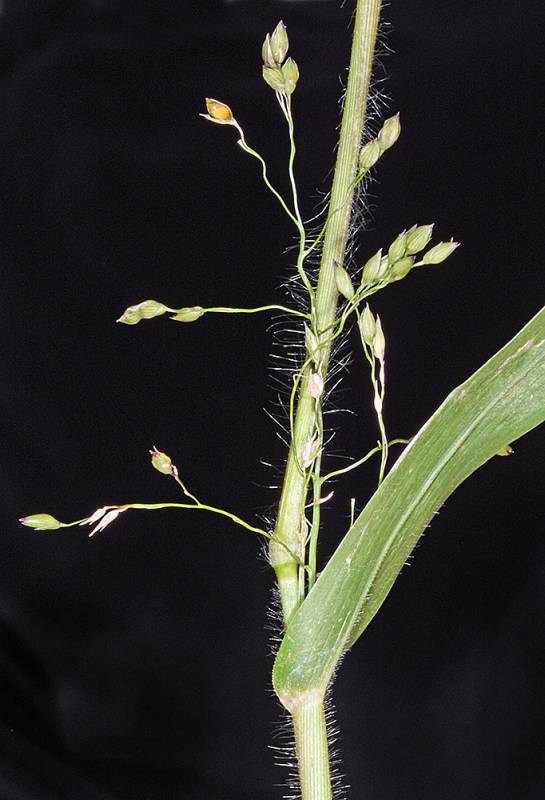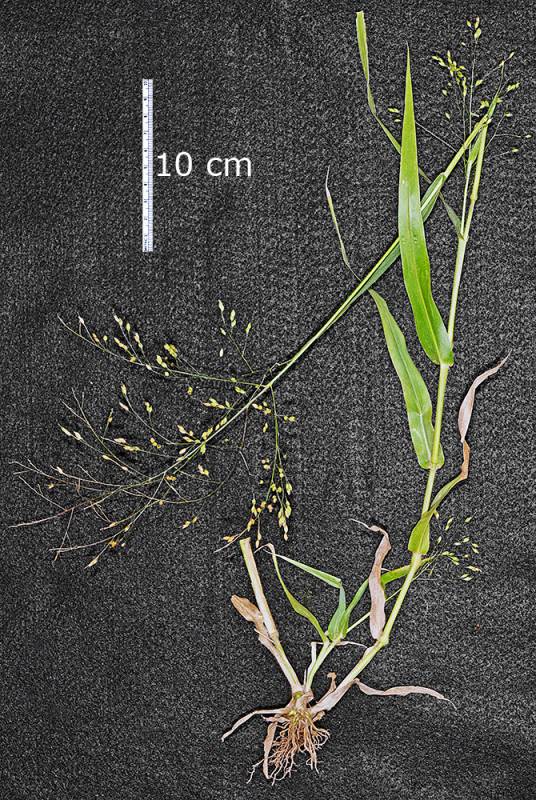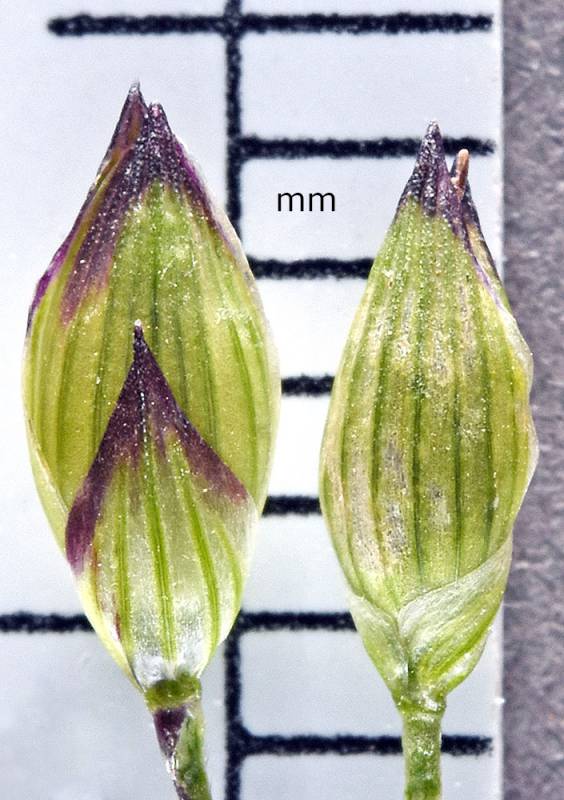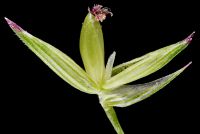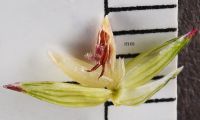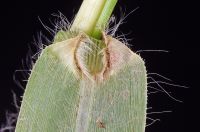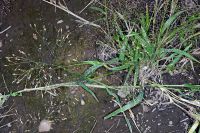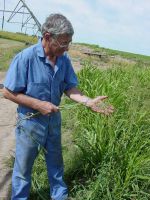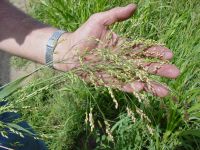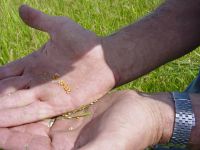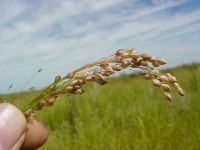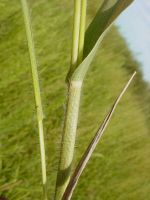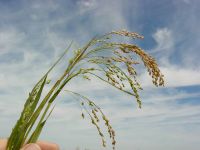Distribution: Occurring on both sides of the Cascades crest in Washington; British Columbia to California, east across North America to the Atlantic Coast.
Habitat: Abandoned fields, roadsides, waste ground.
Flowers: July-September
Origin: Introduced from Asia
Growth Duration: Annual
Conservation Status: Not of concern
Pollination: Wind
Annual, the culms up to 1 m. tall, covered with hairs 2-5 mm. long from little blisters.
Sheaths open; articulation below the glumes; ligules composed of straight hairs about 2 mm. long; blades 7-15 mm. broad.
Inflorescence a somewhat congested panicle 10-30 cm. long, the branches erect, scabrous; spikelets 2-flowered, about 4.5 mm. long; glumes strongly nerved, glabrous, acuminate, the first 2-3 mm. long, 7-nerved, the second 11-nerved, equal to the sterile first lemma, which is 9- to 11-nerved; palea of sterile flower membranous, bi-lobed, 1.5 mm. long; hardened, fertile upper lemma and palea enclosed by the second glume and sterile lemma.
Publication: Sp. Pl. 1: 58. 1753.
- ssp. miliaceum – broomcorn, hog millet, panic millet, proso millet Occurring on both sides of the Cascades crest in Washington; British Columbia to California, east across North America to the Atlantic Coast.
-
ssp. ruderale – broomcorn, hog millet, panic millet
 Occurring east of the Cascades crest in Washington; British Columbia to California, east across North America to the Atlantic Coast.
Occurring east of the Cascades crest in Washington; British Columbia to California, east across North America to the Atlantic Coast.
PNW Herbaria: Specimen records of Panicum miliaceum in the Consortium of Pacific Northwest Herbaria database
WA Flora Checklist: Panicum miliaceum checklist entry
OregonFlora: Panicum miliaceum information
E-Flora BC: Panicum miliaceum atlas page
CalPhotos: Panicum miliaceum photos

